2014 Fantasy Baseball: Trying to Justify Jacoby’s ADP
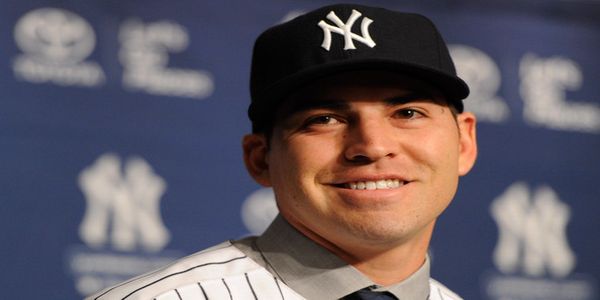

There’s something about Jacoby Ellsbury and his ADP value that just doesn’t sit well with me this year. We are talking about the #11 overall player being selected in fantasy drafts at the moment, right after Ryan Braun and before Bryce Harper, Yasiel Puig, Carlos Gomez, Giancarlo Stanton, and Jay Bruce. I may be completely blind here, but I just cannot see the value selecting him in front of any of those guys. To that end I wanted to profile a couple of other players that I’d rather have this year that could put up a similar stat line without breaking your fantasy draft bank.
First, let’s take a look at some seasonal stats from 2013:
| PA | HR | R | RBI | SB | BB% | K% | ISO | BABIP | AVG | OBP | SLG | wOBA | wRC+ | |
|---|---|---|---|---|---|---|---|---|---|---|---|---|---|---|
| J. Ellsbury | 636 | 9 | 92 | 53 | 52 | 7.40% | 14.50% | 0.128 | 0.341 | 0.298 | 0.355 | 0.426 | 0.343 | 113 |
| Player A | 566 | 12 | 83 | 35 | 41 | 4.40% | 24.40% | 0.161 | 0.363 | 0.28 | 0.343 | 0.441 | 0.344 | 121 |
| Player B | 508 | 8 | 66 | 49 | 36 | 5.50% | 20.50% | 0.125 | 0.319 | 0.26 | 0.313 | 0.385 | 0.308 | 87 |
Just by way of this crude comparison here are three players who had similar seasons in that they flashed double-digit home run power, stole a lot of bases, and scored a lot of runs without generating a ton of RBI. If we did a straight extrapolation in order to give them all 636 plate attempts then we come up with these counting statistics with some added age and ADP information:
| PA | HR | R | RBI | SB | AGE | ADP | |
|---|---|---|---|---|---|---|---|
| J. Ellsbury | 636 | 9 | 92 | 53 | 52 | 30 | 11 |
| Player A | 636 | 13 | 93 | 39 | 46 | 25 | 55 |
| Player B | 636 | 10 | 83 | 61 | 45 | 26 | 130 |
Then, let’s do a little batted ball comparison:
| GB/FB | LD% | GB% | FB% | IFFB% | HR/FB | |
|---|---|---|---|---|---|---|
| J. Ellsbury | 1.8 | 21.00% | 50.80% | 28.20% | 10.20% | 6.60% |
| Player A | 1.95 | 20.90% | 52.30% | 26.80% | 4.80% | 13.50% |
| Player B | 1.81 | 21.00% | 50.90% | 28.10% | 16.80% | 8.40% |
Finally, we look at plate discipline to round out our understanding of these players in 2013:
| O-Swing% | Z-Swing% | Swing% | O-Contact% | Z-Contact% | Contact% | Zone% | F-Strike% | SwStr% | |
|---|---|---|---|---|---|---|---|---|---|
| J. Ellsbury | 28.10% | 65.10% | 45.50% | 77.40% | 93.40% | 88.10% | 47.00% | 57.40% | 5.30% |
| Player A | 36.90% | 65.20% | 50.40% | 58.50% | 85.80% | 75.40% | 47.80% | 68.40% | 12.20% |
| Player B | 36.70% | 62.60% | 48.30% | 65.80% | 88.00% | 78.60% | 44.60% | 62.60% | 10.00% |
It’s dangerous for a number of reasons to compare one season’s worth of statistics in this way. Player A and B are still writing the book on what kind of hitters they will ultimately be in the majors whereas Ellsbury’s book has been years in the making already. In other words, we can say with more confidence what Ellsbury is as a hitter as opposed to accurately predicting exactly what the other players will eventually become (or not) as hitters in the bigs.
However, my point is not to say that player A and B are going to have the same career as Ellsbury, but rather assert that name recognition can only carry you so far. Or, in other words, does Ellsbury’s numbers justify his 2014 ADP? Ultimately, the numbers speak for themselves. What do these numbers tell us then?
APPROACH
First, Ellsbury is the superior hitter. He walks more and strikes out less than the other guys, but that being the case, player A still slashed a respectable .280/.343/.441 line against Ellsbury’s .298/.355/.426 mark. Both players put up very high BABIPs, but it’s doubtful to think that player A will continue posting BABIPs that high despite his blazing speed. This hypothesis is buoyed by the fact that player A also posted the worst contact rates and swinging strike rates of the bunch.
Player B resides somewhere in the middle, carrying a more respectable strike rate, walking a little more than player A, and posting more league average numbers with respect to BABIP, Contact%, and swinging strike rate. Ellsbury makes superior contact overall (T-16th overall among qualified plate appearances in 2013) and has one of the league’s best (T-15th overall) swinging strike rates as well. Furthermore, Ellsbury swings significantly less and makes significantly more contact outside the zone. All three players have similar batted ball profiles: below average line drives, above average ground balls, and below average fly balls.
Advantage: Ellsbury
POWER
Secondly, clearly player A is the most powerful of the bunch. He came in at around 290 ft of batted ball distance, good for 60th overall in the league last year. So, despite the contact issues there is reason to believe his HR/FB rate can be sustained. Given his age as well there is reason to believe that there is some more power potential to come. Regarding Ellsbury, let’s look at some numbers: .114, .114, .230, .099, .128. Which one doesn’t belong? These are Ells’ ISO rates from every year he’s been in the league (min. 300 plate appearances). You’ll remember well that the .230 mark was his mammoth 2011, and probably represents the peak year of Ellsbury’s career thus far. However, there are reasons to believe that Ellsbury’s power will not completely disappear either. Bill Petti’s recent work on batted ball distance aging curves suggests Ellsbury could age better as a lefty when compared to similarly-aged right handed batters (courtesy of Bill Petti and The Hardball Times):
Furthermore, with the move to Yankee Stadium, Ellsbury goes from the 6th worst park for lefties to hit home runs to the 2nd best. There is no way that this move will not have an impact on his power numbers, as the move did for Curtis Granderson when he acquainted himself with the short-porch in right field. Let’s not forget, though, that we’re talking about Jacoby Ellsbury here, he of the 246th best batted ball distance mark in the league (268 ft.). Thankfully he is a dead-pull hitter and, as you can see below, he should have no trouble depositing mistake pitches into the seats next year:
That being said, I’d still take the under on 15 homers next year. Player B’s power profile is more in line with Ellsbury and given his favorable park factors for lefties as well as a full slate of plate appearances (which is not a given yet) he could easily hit double-digit homers in 2014 as well.
Advantage: Player A
SPEED
It would be difficult to say that any one player has an advantage in this area. Ellsbury obviously has great speed as has stole 50+ bases three times, and 70 bases in 2009, coming in at 15th overall in SB% all time. However, as he is the oldest of the three, there is reason to believe the days of 50 SB are over and projecting 40 thefts is probably more realistic at this point.
Player A, on the other hand, plays for a team that doesn’t steal a lot of bases and who doesn’t exhibit the base-running acumen that Ellsbury does (63% success rate in 2013). However he is young and could reasonable repeat last year’s performance given the same number of attempts. Even a slight improvement in his caught-stealing rate could push the number even higher. Player B is intriguing given his 75% success rate and the fact that he stole about the same number of bases as Player A. However, his lineup position could limit his overall plate appearances. Expecting more than 35 might be pushing it. However, it’s clear that, outside of netSB leagues, all three players will provide similar value in 2014.
Advantage: Push
INTANGIBLES
Ellsbury moves from the best team offensive in the league in 2013 to the middle-of-the-pack in New York, although that’s a bit unfair to say given the recent overhaul in the Yankees lineup. Still, the departure of Robinson Cano to the west coast will hurt and the aging crew of Ellsbury, McCann, and Beltran with a questionable supporting cast in Brett Gardner, Mark Teixeira, Kelly Johnson, and Derek Jeter makes for a wide variety of outcomes by the end of the season. If this bunch can stay healthy Ellsbury could have a productive year. The better money, though, is on a slew of various ailments and DL-stints which could render this a very ugly lineup, very quickly. My money is on the under in regards to Ellsbury finishing with better counting stats then he did last year in Boston.
Player A’s situation is somewhat similar, although his team is younger and about to get a new influx of talent from their farm that could push them ahead offensively. Surrounded by a good combination of young talent and veteran presence, it’s certainly possible for him to take another step forward offensively. The biggest obstacle to this will be refining his approach which will include being more patient, swinging at better pitches, and improving his putrid .250/.307/.396 mark against RHP.
Player B’s problems come from the other side of the plate as he does not hit LHP (.220/.272/.298 career), and he has some home/road splits as well. However, only time will tell as both these players have relatively small samples from which to analyze. At any rate, player B, given a full complement of at bats has a ceiling of .271/.330/.404 with 10 homers and 36 stolen bases according to the Fans at Fangraphs. Given his relatively low ADP that would be more than sufficient production.
Ellsbury has the most to lose here as an 11th overall ADP demands superstar production. Player A is guaranteed playing time all year and is the one whose approach needs to change the most in order to continue at his current levels of offensive production. I have a feeling that he will be able to do just that, and for me, he has a healthier ADP relative to what he could do for your fantasy team this year. Player B has got to figure out lefties in order to avoid becoming a platoon partner as his team will not be patient all year. However, if he can mitigate those concerns and continue to be a force at the bottom of what could be a potent lineup, he could represent great value in the middle to late rounds on draft day.
Advantage: Players A and B
There is no doubt that Jacoby Ellsbury is a good player, probably even a great player. However, he’s still being drafted too high. Fantasy managers can dream about the short right-field porch in Yankee Stadium all they want but it’s not going to have the effect that everyone might think (13-15 HR will be realistic). For my money you can still party like it’s 1999, but stop drafting Jacoby like it’s 2011. I’d rather take the chance on Starling Marte (player A) or a later round flier on Leonys Martin (player B).
What do you think? Opine below or follow me on Twitter (@agape4argentina) to continue the discussion.
SOURCES:
Baseball Reference
Baseball Heat Maps
ESPN Home Run Tracker
Fangraphs
NESN
The Hardball Times



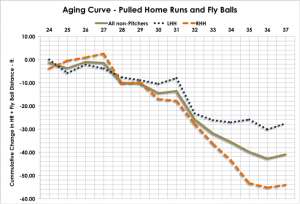
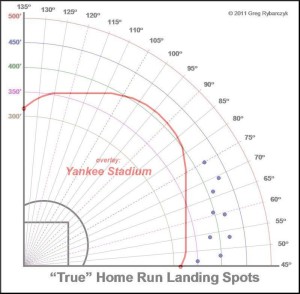
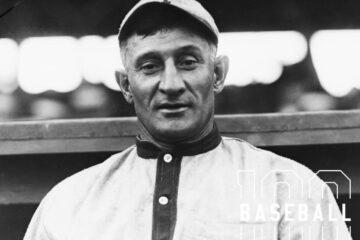
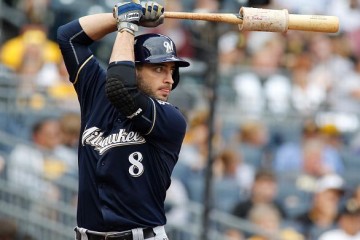
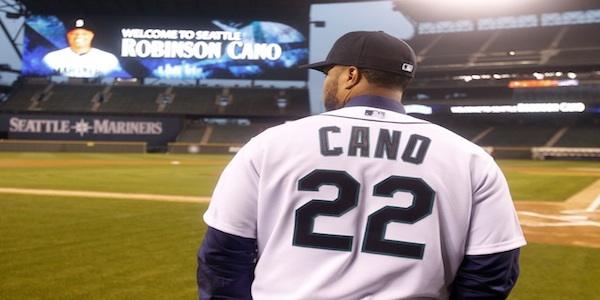
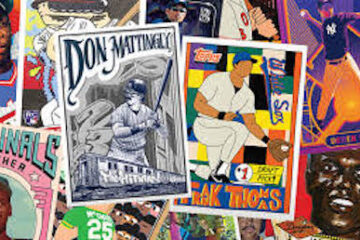
4 Comments
Good stuff. I have been wondering this myself. It isn’t that I rank Ellsbury lower than a guy like Bruce, but like you pointed out, there are better avenues to achieving the necessary stats. I would rather have Marte than Ellsbury when you consider the draft price. ADP and later draft targets matter.
You can even throw Gardner into this situation. However, like Martin, he is likely to hit at the bottom of the order.
Stanton/Harper and Marte OR Ellsbury and Allen Craig/Adrian Gonzalez. Both are fine combos, but I am taking the Stanton/Harper and Marte side.
Considering Marte’s low IFFB% (not the longest of sample sizes of course), I would take the chance of him producing at least a .270-.275 BA despite his high K%. And obviously there is a small chance for some K% decline and positive growth from Marte.
Yes, I think Marte is still young enough to take another step forward in his approach. The IFFB% has yet to be determined as I think there’s little if any correlation from year to year. So, if that number regresses to league average you could see a slight drop in LD%, thus affecting BABIP and ultimately batting average. I think, on the whole, Marte will not hit .280 again but could still see the neighborhood of .265-.270. Yes, Rich, you and I are on the same page…the point is not that Ellsbury isn’t good, but that I’d rather take a Harper or Stanton with that pick and get “similar” Ellsbury-like production later.
You could make this same kind of arguement that there is equivalent numbers much later in the draft for any of Bryce Harper, Yasiel Puig, Carlos Gomez, Giancarlo Stanton, and Jay Bruce. None of these guys come without the low risk that you’d expect with a first rounder, Harper your paying for potential, Puig played way over expectations last year and could hit .230 this year for all we know, Stanton has nobody on base in front of him and will have low runs and rbi’s once again, can we really expect another great season from Gomez.
I think the main reason for Ellsbury going so high is that there is an expectation that his power numbers will go up in NY and should score a ton of runs, not to mention that he is the safest SB pick out there.
Would I like to take Ellsbury in the first round? heck no, but I really don’t love the alternative options at the 11th pick either.
I think the Yankees offense is a tad overrated this year. What if any one of Beltran, McCann, Ellsbury goes down with an injury (which is probably likely at some point). That lineup is just not scary. If we were talking about Granderson I’d be excited about the short-porch argument but Ellsbury just isn’t a HR guy–as stated above. I think 15 is his ceiling, and again, Marte can probably deliver that much later. And Leonys even later (although I’d probably set his ceiling at 10-12 at MOST). Don’t forget speed ages as well, so don’t be so sure Ells will hit 40 SB this year. I think most projection systems have him around there, but I think 35 is a more realistic number. I could be wrong…I’m certainly open to entertaining the idea. 😉